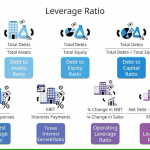Short selling is a complex and often misunderstood investment strategy that allows traders and investors to profit from a decline in a stock’s price. While it offers the potential for significant gains, it also carries substantial risks that must be carefully managed. In this comprehensive guide, we’ll delve into the mechanics of short selling, explore the key considerations and strategies involved, and examine the regulatory landscape that governs this unique approach to the markets.
Understanding the Fundamentals of Short Selling
At its core, short selling is the practice of borrowing a security, typically a stock, and then selling it in the open market with the expectation that the price will decline. The goal is to then buy back the shares at a lower price, return them to the lender, and pocket the difference as profit.
This strategy is the opposite of the traditional “long” position, where an investor purchases a security with the hope that its value will appreciate over time. Short sellers, on the other hand, are betting on a decline in the stock’s price, making them inherently bearish in their market outlook.
Short selling is a trading strategy that involves selling borrowed shares with the expectation that the price of the stock will decline. This practice is based on the belief that prices of certain stocks are overvalued or will soon experience a decline. By selling shares that they don’t actually own, short sellers aim to profit from falling stock prices.

To execute a short sale, a trader needs to borrow the shares from a broker or another investor. Once the shares are borrowed, they are immediately sold in the market. The short seller’s hope is that the share price will drop, allowing them to repurchase the shares at a lower price and return them to the lender. The difference between the selling price and the repurchase price represents the short seller’s profit.
Short selling is often seen as a way to profit from a bearish market or when a trader identifies a specific stock that they believe will decline in value. However, it’s important to note that short selling can be a risky strategy, as losses can be unlimited if the stock price rises instead of falling.
The Mechanics of a Short Sale
To execute a short sale, an investor must first have a margin account with a brokerage firm. This allows them to borrow the shares they wish to sell short. The process typically involves the following steps:
- Borrow the Shares: The investor borrows the shares from their broker, who may obtain them from the firm’s own inventory, other clients’ margin accounts, or through a third-party lender.
- Sell the Borrowed Shares: The investor then sells the borrowed shares on the open market, receiving the proceeds from the sale.
- Buy Back the Shares: If the stock price declines as expected, the investor can then buy back the shares at a lower price, returning them to the lender and pocketing the difference as profit.
- Close the Position: The final step is to close the short position by returning the borrowed shares to the lender, effectively completing the transaction.
It’s important to note that short sellers must pay any dividends or other distributions associated with the borrowed shares to the lender, as well as any interest charged on the margin loan used to finance the short sale.
Risks and Rewards of Short Selling
Short selling carries a unique risk-reward profile compared to traditional long-only investing. While the potential upside is limited to the stock’s price declining to zero, the potential downside is theoretically unlimited, as the stock’s price can rise indefinitely.
This asymmetric risk-reward ratio is one of the primary reasons why short selling is considered a more advanced and potentially volatile investment strategy. Traders must maintain strict discipline and risk management to mitigate the significant downside risks associated with short positions.
On the other hand, successful short sellers can reap substantial rewards when their market outlook proves accurate, and the stock price falls as anticipated. This can provide a valuable hedge against long positions or allow traders to capitalize on bearish market conditions.
Strategies and Timing for Short Selling
Short sellers typically employ a variety of strategies and timing considerations to identify and capitalize on opportunities in the market. Some of the key factors they may consider include:
Market Conditions and Sentiment
Short sellers often look for opportunities during bear markets or periods of broader market weakness, as stocks tend to decline more rapidly in these environments. They may also target stocks that appear overvalued or have deteriorating fundamentals, such as slowing revenue growth or increasing costs.
Technical Indicators and Bearish Signals
Short sellers may use technical analysis to identify bearish patterns, such as the breakdown of a stock below a key support level or the formation of a “death cross” (when a stock’s short-term moving average crosses below its long-term moving average). These technical indicators can provide valuable insights into the potential direction of a stock’s price movement.
Hedging and Risk Management
Short selling can also be used as a hedging strategy to offset the downside risk of a long position in the same or a related security. This can help investors protect their overall portfolio from market declines, though it may also limit their upside potential if the market continues to rise.
Timing and Execution
Timing is critical in short selling, as stocks tend to decline much faster than they advance. Short sellers must be nimble in entering and exiting their positions, as a sudden surge in a stock’s price can quickly erode their profits or even result in significant losses.
Successful short selling requires a combination of careful analysis, risk management, and effective strategies. Here are some common short selling strategies and techniques:
- Fundamental Analysis: This involves evaluating a company’s financial health, management, industry trends, and competitive landscape to identify potential short sale candidates.
- Technical Analysis: Traders use charts, patterns, and indicators to identify short-term price trends and market reversals that can be exploited through short selling.
- Pairs Trading: This strategy involves simultaneously taking a long position in one stock and a short position in another related stock, aiming to profit from the relative performance of the two stocks.
- Event-Driven Short Selling: Traders look for specific events or catalysts, such as earnings releases, product launches, or regulatory changes, that can impact a stock’s price and initiate short positions accordingly.
- Contrarian Approach: This strategy involves identifying stocks that are overhyped or overbought and taking short positions based on the belief that the market sentiment will reverse, leading to a decline in the stock price.
It’s important to note that short selling requires constant monitoring and adjustment. Traders should stay updated on news, market conditions, and any factors that may impact the stock’s price. Proper risk management techniques, such as setting stop-loss orders and position sizing, are also crucial for successful short selling.
Factors to Consider Before Short Selling
Before engaging in short selling, there are several factors that traders should carefully consider:
- Market Conditions: Assess the overall market sentiment and trend. Short selling is generally riskier during bull markets when stock prices are rising.
- Stock Liquidity: Ensure that the stock you plan to short has enough trading volume and liquidity to allow for easy entry and exit.
- Short Interest and Borrowing Costs: Research the short interest and borrowing costs associated with the stock. High short interest and expensive borrowing costs can increase the risk and cost of maintaining a short position.
- Company Fundamentals: Analyze the financial health, industry position, and competitive landscape of the company. A thorough understanding of the company’s fundamentals can help identify potential short sale candidates.
- Risk Tolerance: Assess your risk tolerance and investment goals. Short selling carries higher risks compared to traditional long positions, so it’s crucial to determine if it aligns with your risk tolerance and investment strategy.
Monitoring and Managing Short Positions
Once a short position is established, it’s essential to actively monitor and manage it. Here are some key considerations:
- Stop-Loss Orders: Set stop-loss orders to limit potential losses in case the stock price moves against your short position. This helps protect against large losses if the stock price rises suddenly.
- Trailing Stop Orders: Consider using trailing stop orders, which automatically adjust the stop price as the stock price moves in your favor. This allows for potential profits to be locked in while still protecting against significant losses.
- Regular Analysis: Continuously monitor the stock’s price, news, and any factors that may impact its value. Regular analysis helps identify when it may be appropriate to close or adjust the short position.
- Risk Management: Assess the overall risk exposure of your portfolio, considering both long and short positions. Proper risk management techniques, such as diversification and position sizing, can help mitigate potential losses.
Regulatory Landscape and Oversight
Short selling has long been a subject of scrutiny and regulation, as policymakers and regulators seek to balance the potential benefits of short selling with the risks it poses to market stability and integrity.
Historical Regulations and Reforms
In the United States, short selling has been regulated since the 1930s, with the introduction of the “uptick rule” that required short sales to be executed at a price higher than the previous trade. This rule was later repealed in 2007, leading to increased concerns about the potential for short sellers to exacerbate market volatility.
In response, the SEC implemented Regulation SHO in 2005, which introduced additional requirements for short sellers, such as the “locate” rule, which mandates that brokers have reasonable grounds to believe the shares can be borrowed before executing a short sale.
Current Regulatory Landscape
More recently, in October 2023, the SEC announced new rules aimed at enhancing the transparency of short-selling practices. These regulations require investment managers with large short positions to report their positions to the SEC, with an aggregated, anonymized version of the data being made publicly available.
Regulations on short selling vary across different jurisdictions, with the European Union, for example, requiring the disclosure of short positions exceeding certain thresholds. Policymakers continue to grapple with the balance between the potential benefits and risks of short selling, and the regulatory environment is likely to evolve further in the years to come.
The Impact of Short Selling on the Markets
Short selling has long been a subject of debate, with proponents arguing that it enhances market efficiency and provides important price discovery, while critics contend that it can be used to manipulate markets and harm businesses.
The Positive Impacts of Short Selling
Supporters of short selling argue that it plays a vital role in the functioning of efficient, liquid markets. By providing a counterbalance to the natural bullish bias of many investors, short sellers can help identify and correct overvalued stocks, preventing asset bubbles from forming and ultimately contributing to more accurate pricing.
Additionally, short selling can enhance market liquidity by allowing market makers and other participants to quickly adjust their positions in response to changing market conditions. This can help reduce volatility and improve the overall stability of the financial system.
The Potential Downsides of Short Selling
Critics of short selling argue that it can be used to artificially depress stock prices, particularly for smaller or more vulnerable companies. This can lead to job losses, damage to shareholder value, and broader economic harm.
There have also been concerns about the potential for short sellers to engage in manipulative practices, such as spreading false information or coordinating to create “bear raids” that overwhelm a stock’s price. While such activities are generally illegal, the potential for abuse remains a source of ongoing debate and regulatory scrutiny.
Short Selling in the Modern Investment Landscape
As the investment landscape continues to evolve, short selling has become an increasingly sophisticated and complex strategy, with institutional investors and quantitative trading firms playing a growing role in the short-selling ecosystem.
The Rise of Hedge Funds and Quantitative Strategies
Hedge funds have long been active participants in short-selling, using it as a tool to hedge their long positions or to generate profits from bearish market views. More recently, the increasing prominence of quantitative trading strategies has also led to a rise in algorithmic short-selling, with sophisticated models and data analysis driving the identification and execution of short positions.
The Impact of Retail Investor Participation
The rise of retail investor participation in the markets, fueled in part by the proliferation of commission-free trading platforms and the increased accessibility of financial information, has also had a significant impact on short selling. Individual investors have become more active in identifying and targeting companies they believe to be overvalued, leading to high-profile short-squeeze events that have caught some short sellers off guard.
The Evolving Regulatory Landscape
As short selling continues to evolve, regulators are grappling with the challenge of striking the right balance between protecting market integrity and allowing for the potential benefits of short selling. The new SEC rules on short position reporting are just one example of the ongoing efforts to enhance transparency and oversight in this complex and often controversial area of the markets.
Short Selling versus Long Investing
Short selling is often contrasted with long investing, where investors buy shares with the expectation that their value will increase over time. While long investing is the more traditional approach, short selling can provide additional opportunities and benefits.

Long investing allows investors to participate in the growth and success of companies and markets. It aims to generate profit through capital appreciation and dividends. Long investors typically have a positive outlook on the stocks they own and seek to benefit from the upward movement of their investments.
On the other hand, short selling allows traders to profit from declining stock prices. It provides a way to hedge against market downturns and can generate profits in bearish markets. Short sellers often take a more critical view of the stocks they short, searching for overvalued or fundamentally weak companies.
Both long investing and short selling have their merits and risks. The choice between the two strategies depends on individual investment goals, risk tolerance, and market conditions.
Conclusion
Short selling is a complex and nuanced investment strategy that requires a deep understanding of market dynamics, risk management, and regulatory considerations. While it offers the potential for significant gains, it also carries substantial risks that must be carefully managed.
Whether you are an individual investor, a hedge fund manager, or a quantitative trading firm, navigating the world of short selling requires a disciplined and well-informed approach. By staying up-to-date on the latest developments in the regulatory landscape, monitoring market conditions and sentiment, and employing robust risk management strategies, investors can potentially capitalize on the unique opportunities presented by short selling while mitigating the inherent risks.
As the investment landscape continues to evolve, the role of short selling in the modern markets is likely to remain a topic of ongoing debate and scrutiny. By understanding the complexities and considerations involved, investors can make more informed decisions and potentially enhance the efficiency and stability of the financial system as a whole.






